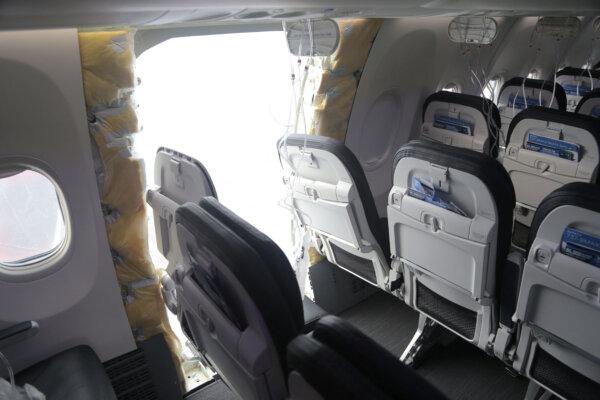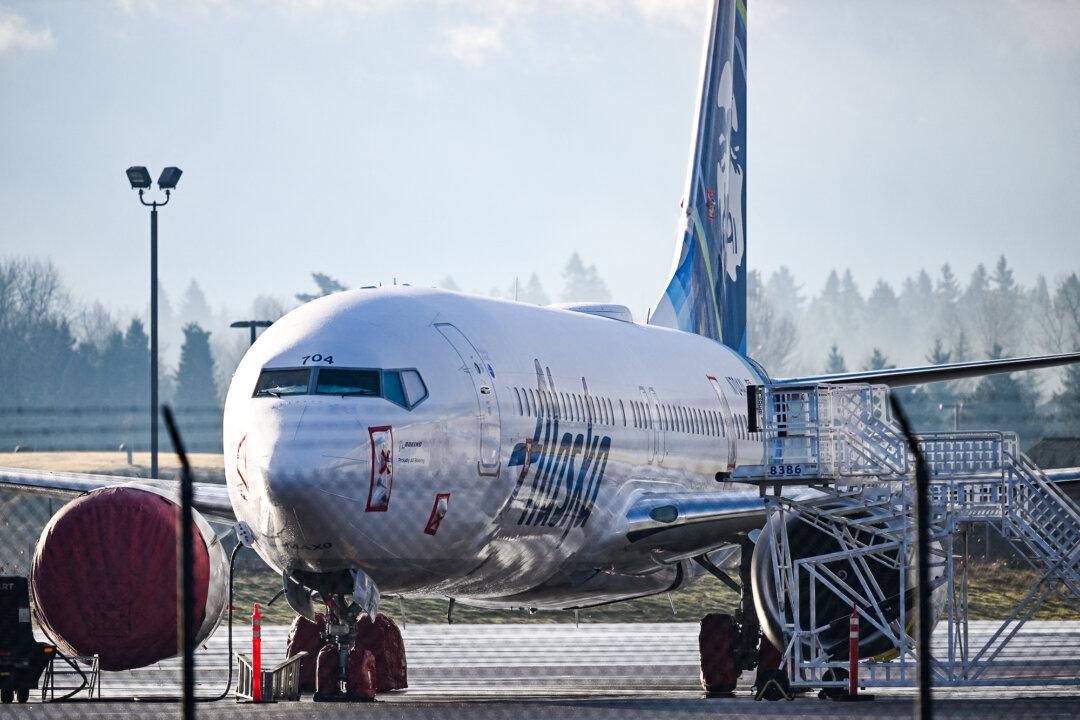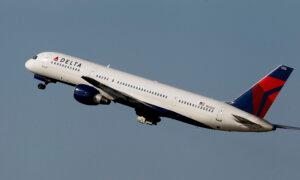Federal air safety regulators granted approval on Jan. 24 for an inspection process that would allow grounded Boeing 737 MAX 9 aircraft to return to service in the wake of a serious midair incident on an Alaska Airlines flight.
Mike Whitaker, head of the Federal Aviation Administration (FAA), expressed confidence in the agency’s review of a door plug blowout on an Alaska Airlines Boeing 737-9 MAX.
The FAA has approved a comprehensive inspection and maintenance process for the aircraft’s return to flight for all 171 grounded Boeing 737 MAX 9 aircraft.
However, the FAA clarified that production expansion for the troubled 737 MAX series wouldn’t be permitted. The agency communicated the decision to Boeing on Jan. 24.
An Alaska Airlines Boeing 737 MAX-9 aircraft made an emergency landing on Jan. 5 because of a blown-out door plug at 16,000 feet. Following the incident, the FAA grounded 171 planes as a safety measure.
The incident led to thousands of flight cancellations by U.S. carriers Alaska Airlines and United Airlines.
“We grounded the Boeing 737-9 MAX within hours of the incident over Portland and made clear this aircraft would not go back into service until it was safe,” Mr. Whitaker said in a statement. “The exhaustive, enhanced review our team completed after several weeks of information gathering gives me and the FAA confidence to proceed to the inspection and maintenance phase.”
The FAA justified the halt in expanding production of Boeing’s 737 MAX narrowbody family by citing the need to “ensure accountability and full compliance with required quality control procedures” by the aircraft manufacturer.
“We will not agree to any request from Boeing for an expansion in production or approve additional production lines for the 737 MAX until we are satisfied that the quality control issues uncovered during this process are resolved,” Mr. Whitaker said.
Boeing’s shares fell about 6 percent in mid-afternoon trading on Jan. 25 following the announcement.
On Jan. 24, the FAA also laid out an inspection and maintenance process so the grounded MAX-9 planes could return to service.
“The exhaustive, enhanced review our team completed after several weeks of information gathering gives me and the FAA confidence to proceed to the inspection and maintenance phase,” Whitaker said.
The FAA disclosed the inspection and maintenance process for the grounded MAX 9 planes on Jan. 24, indicating a pathway for their eventual return to service.

Alaska Airlines confirmed receipt of the inspection regime and announced plans to commence returning planes to service on Jan. 26.
The move comes on the same day that Sen. Maria Cantwell (D-Wash.), who chairs the Senate Committee on Commerce, Science, and Transportation, met with Boeing CEO David Calhoun.
Ms. Cantwell, who represents the state where Boeing makes its aircraft, said she conveyed the importance of prioritizing quality engineering and safety at the meeting.
“The American flying public and Boeing line workers deserve a culture of leadership at Boeing that puts safety ahead of profits,” she wrote on the platform X.
“I will be holding hearings to investigate the root causes of these safety lapses.”
The senator previously wrote to the FAA, following the Alaska Airlines incident, demanding answers about the quality control audits that Boeing and subcontractor Spirit AeroSystems conducted over the past two years. She also wanted to know more about the FAA’s oversight of each manufacturer.
The National Transportation Safety Board (NTSB) is investigating the possibility that bolts used to secure a door plug were missing before the Alaska Airlines plane took off from Portland on Jan. 5.
NTSB investigators will return to Boeing’s 737 assembly factory in Renton, Washington, as part of the probe into the timeline of the failed door plug.
The FAA is scrutinizing whether Boeing and its suppliers adhered to proper safety procedures during the manufacturing process.







